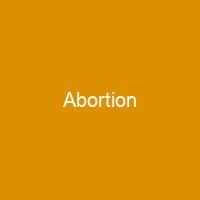Understanding Abortion: A Medical Perspective
Abortion is a complex and often controversial topic that involves the termination of a pregnancy by removing or expelling an embryo or fetus. But what exactly does this mean, and why do people choose to have abortions? Let’s delve into the details.
The Types of Abortion
There are two main types: induced abortion and spontaneous abortion. An induced abortion is when deliberate steps are taken to end a pregnancy, while a spontaneous abortion, also known as miscarriage, occurs naturally in approximately 30-40% of pregnancies.
The Reasons Behind Choosing an Abortion
Rhetorical question: Have you ever wondered why someone might choose to have an abortion? The most common reasons include birth-timing, limiting family size, maternal health concerns, and situations where a pregnancy is the result of rape or incest. These decisions are deeply personal and often influenced by complex factors.
The Safety of Abortion Procedures
Induced abortions can be one of the safest medical procedures when performed legally in industrialized societies. However, unsafe abortions, which occur due to unskilled individuals or inadequate resources, can lead to severe complications and even maternal deaths. Studies show that making safe abortion legal and accessible significantly reduces these risks.
Methods of Abortion
There are several methods used for induced abortions: medical (using pharmaceuticals like mifepristone and misoprostol), surgical (such as suction-aspiration or dilation and extraction), and labor induction. Each method has its own set of risks and benefits, but the most common is early medical abortion using a combination of these drugs.
The Global Impact of Abortion
Every year, around 73 million abortions take place globally, with about 45% being performed unsafely. This highlights the urgent need for accessible and safe abortion services. In some areas, abortion is only legal in specific cases such as rape, incest, fetal defects, poverty, or risk to maternal health.
Legal and Ethical Considerations
The debate surrounding abortion is multifaceted, involving moral permissibility, governmental authority, and women’s rights. Opinions vary widely among religious groups, with some denominations supporting abortion rights while others oppose them strongly. The World Medical Association Declaration on Therapeutic Abortion provides a framework for resolving these dilemmas.
Historical Context
Abortion has been practiced since the 17th century and was initially permitted under common law before quickening. However, in the 19th century, anti-abortion laws were passed due to racist and misogynist grounds. The Catholic Church’s stance on abortion evolved over time, with a strong opposition developing in the 19th century.
Modern Legislation
The legal landscape of abortion varies widely across countries. For instance, in the United States, Roe v. Wade and Doe v. Bolton established that the state’s interest in fetal life becomes compelling only at viability. The Guttmacher Institute estimates there were 2,200 intact dilation and extraction procedures in the US during 2000.
Conclusion
The safety and accessibility of abortion are crucial for women’s health and well-being. Making safe abortion services available can significantly reduce maternal mortality rates and improve overall reproductive health outcomes. The journey towards safer, more accessible abortion care is ongoing, but it is a critical step in ensuring that every woman has the right to make informed decisions about her own body.

You want to know more about Abortion?
This page is based on the article Abortion published in Wikipedia (retrieved on March 7, 2025) and was automatically summarized using artificial intelligence.







